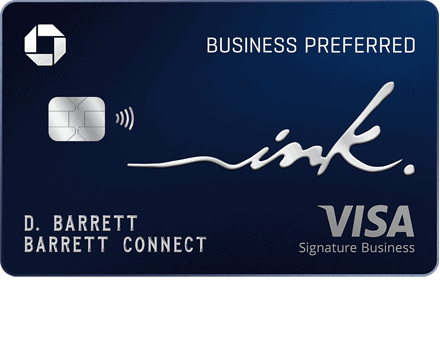Using Plastiq to Pay Bills: Is It Worth it?
While credit cards can be your key to earning hundreds of thousands of points on your everyday spending, not every merchant accepts them. The post Using Plastiq to Pay Bills: Is It Worth it? appeared first on MileValue.

While credit cards can be your key to earning hundreds of thousands of points on your everyday spending, not every merchant accepts them. Contractors, landlords, daycare services and other vendors typically don’t accept card payments, preventing you from earning points on thousands of dollars worth of yearly expenses.
That’s where Plastiq comes in.
Plastiq is a workaround that enables you to use a credit card to fund these purchases while allowing you to continue earning your credit card points as normal.
However, while Plastiq may sound like a godsend, it charges transaction fees that make it worthwhile using in certain situations only. Let’s take a look at what Plastiq is and when it’s worth using.

What Is Plastiq?
Plastiq is an online payment platform that enables you to use a credit card to pay vendors who wouldn’t otherwise accept card payments. In return for this service, Plastiq charges a 2.9% convenience fee on each payment you make.
This service lets you pay landlords, utility companies, homeowners association fees and other vendors who don’t typically accept credit card payments. The benefit of this is that you’ll be able to earn credit card rewards on this expenditure as you normally would, enabling you to earn thousands of extra points every year.
To use Plastiq, create an account, add the credit cards you want to use (and select one as your default), input the recipient’s payment details and charge the amount you need to pay. Plastiq will then convert your payment to an acceptable payment type, including ACH, wire or paper checks, depending on which one you select, enabling your recipient to accept the transfer.
Conveniently, your recipient doesn’t need to have their own Plastiq account to accept the payment, making it easy to pay businesses using this method.
Limitations of Paying with Plastiq
Plastiq accepts Visa, Mastercard, American Express, Discover and Diners Club cards.
However, not every transaction type is supported by Plastiq, and each card issuer has its own restrictions. Plastiq is designed for consumer-to-business payments rather than peer-to-peer payments.
Debt products have the greatest number of card issuer restrictions. For instance, you can’t pay credit card bills or fund investments with any card issuer through Plastiq. Likewise, you can’t pay auto loans, student loans or mortgage payments using a Visa or American Express card through Plastiq.
American Express has the most restrictions when it comes to real estate payments, forbidding you from paying commercial rent, escrow agreements, timeshare fees and short-term rental payments through Plastiq.
You can find a full breakdown of Plastiq restrictions for each card issuer.
Costs of Using Plastiq
Plastiq charges 2.9% on every payment you make with a credit card, debit card or prepaid card. For transactions funded with a bank account, Plastiq doesn’t charge any transaction fees. If you make a cross-border payment, Plastiq will apply a 1% cross border fee.
Plastiq also charges “delivery fees” on top of its transaction fees, which you can find in the table below.
Payment delivery method Fee Check $1.49 ACH bank transfer $0.99 Billpay $0.99 ETF $0.99 Domestic wire $8.99 International wire $39
If your balance doesn’t have enough funds to cover your payment, Plastiq will charge you an insufficient funds fee of $30.
Reducing the Costs of Using Plastiq
Plastiq offers you the chance to earn credits to offset the cost of future transaction fees. These are known as “Fee-Free Dollars” (FFDs).
One FFD equals $1 that you can send free of transaction fees. For example, if you had 200 FFDs and you sent $250 as a payment, you’d be charged a 2.9% fee on the remaining $50 only.
You can earn FFDs through Plastiq’s referral program. Right now, Plastiq offers you the chance to earn 2,500 FFDs when you refer a business to sign up for Plastiq and send payments totaling $2,500 in the first 30 days.
Your FFDs expire after 90 days, so be sure to use them.
Is Plastiq Worth the Fees?
The points and miles hobby is all about reducing costs and maximizing the return on your spending. So, can voluntarily paying a 2.9% transaction fee ever square with rewards maximization?
In short, yes—it can be worth it, but only in select instances.
Namely, if you’re working toward a welcome bonus that you’re struggling to reach through your everyday spending, using Plastiq could help you achieve the minimum spend organically.
For example, the Ink Business Preferred® Credit Card has a typical welcome offer of 90,000 to 120,000 points after spending $8,000. If you meet the spending requirement entirely through payments made with Plastiq, you’d incur $232 worth of transaction fees.
Chase Ink Business Preferred® Credit Card
90,000 bonus points after you spend $8,000 spend in 3 months.
While that’s no small fee, 80,000 to 120,000 Ultimate Rewards points are worth at least $1,000 to $1,500 when redeemed through Chase Travel℠. And if you transfer your Ultimate Rewards points to one of Chase’s 14 airline or hotel partners, you can get far more value for your points.
In this case, you’d still come out ahead. If the choice is between missing out on the welcome offer entirely vs. the value of the welcome offer being slightly reduced, the choice is obvious.
However, for earning rewards through everyday expenditure without any minimum spends to hit, making payments through Plastiq is often not worth it.
For instance, if you wanted to earn a return on rental payments using Plastiq, you could use the Capital One Venture Rewards Credit Card to earn 2X miles on every dollar spent.
If you paid $1,500 per month in rent—working out to $18,000 per year—you’d earn 36,000 Capital One Miles, worth at least $360 when redeemed at 1 cent apiece. However, you’d have to pay $522 in transaction fees over the course of the year, not only wiping out the value of your points earned, but also costing you even more.
For these sorts of everyday cases, Plastiq is rarely worth it.
However, Plastiq can be worthwhile when paying tuition fees, but keep in mind that you can’t pay student loans with a credit card through Plastiq, as these are a type of debt product. While you can use Plastiq to pay tuition fees that help you earn toward a minimum spend, another reason to pay tuition fees with Plastiq is to avoid the interest paid on student loans.
Many credit cards offer promotional APR, in which you’re offered 0% APR on your payments for a fixed period of time, typically between 12 to 24 months. The average current interest rates on student loans range between 4% and 7% (although they can be higher).
That means you could pay your tuition fees using a 0% APR credit card through Plastiq and pay off your balance before the promotional APR period ends. That way, you’d need to pay only Plastiq’s 2.9% transaction fee instead of 4% to 7% (if not more) in student loan interest rates.
Pursuing this method can save you thousands of dollars, but beware of the pitfalls of not paying your balance within the promotional APR window. If you fail to do this, you’ll be hit by double-digit interest rates, eroding the value of your rewards and savings.
Alternatives to Plastiq
As mentioned, sending payments with Plastiq can help you earn credit-card rewards where you otherwise wouldn’t. However, it’s important to consider alternatives, given that there’s a fee involved.
First, if you’re wanting to earn points on your rental payments without any transaction fees, you can use the Bilt Mastercard®, which will convert your payment to ACH or checks. You can earn 1X Bilt points per dollar spent, up to 100,000 points per calendar year on rent, when you use your card five or more times during a billing cycle (see rewards and benefits).
Second, if you’re considering paying tuition fees with a credit card, check whether the university accepts credit card payment and what they charge in fees. If they charge less than 2.9% to accept credit card payments, you’re better off paying them directly rather than going through Plastiq.
Lastly, if you’re looking to pay your taxes with a credit card to earn rewards, you’d be better off going through an IRS-approved provider, such as Pay1040 or ACI Payments, Inc. These two providers charge 1.75% and 1.85%, respectively, to process credit card tax bill payments.

Final Thoughts
If you’re working toward a minimum spend that you can’t otherwise hit, using Plastiq can make sense. With its help, you’ll be able to leverage your natural expenditure to help you earn thousands of extra points. And while the value of your welcome bonus will be reduced by Plastiq’s fees, you’ll still come out ahead when you redeem your points for travel.
Otherwise, you should avoid Plastiq, as you’ll often pay more in fees than you earn in rewards.
The post Using Plastiq to Pay Bills: Is It Worth it? appeared first on MileValue.









![[DEALS] iScanner App: Lifetime Subscription (79% off) & Other Deals Up To 98% Off – Offers End Soon!](https://www.javacodegeeks.com/wp-content/uploads/2012/12/jcg-logo.jpg)





















.png)





















![‘Companion’ Ending Breakdown: Director Drew Hancock Tells All About the Film’s Showdown and Potential Sequel: ‘That’s the Future I Want for [Spoiler]’](https://variety.com/wp-content/uploads/2025/02/MCDCOMP_WB028.jpg?#)

























